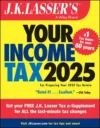No Charitable Contribution Deduction for Home Not Severed from Land
A couple bought a home but wanted to demolish it and rebuild on the same property. Instead of simply tearing it down, they arranged with a charity to “deconstruct” it in order to give the charity’s workers experience in this activity as well as to give them the materials reaped from the demolition. The couple obtained an appraisal of the home prior to deconstruction, a projection from the charity regarding the value of the materials expected to be received, and another appraisal based on the assumption that the home was to be used for training purposes. They claimed a charitable contribution deduction, which the IRS disallowed in full.
A district court agreed with the IRS (Lawrence P. Mann, DC MD, 1/31/19). Generally, a charitable contribution deduction can be claimed only for an undivided interest in property. In this case, while state law (Maryland) permitted a home to be severed from land to create separate property, the couple never took the legal steps to do so. They never recorded the severance so the donation of the home was a donation of an impermissible partial interest in property.
The court noted that even if the donation of a partial interest were permissible, it wouldn’t be deductible here. There was no qualified appraisal filed with the return, as is required for any donation of property valued at more than $5,000. The first appraisal was invalid because it was based on “highest and best use,” which would only apply if the home were intact rather than deconstructed. And the second appraisal was invalid because it was not consistent with the condition of the conveyance (i.e., a deconstructed home).
Note: Several years ago, the Tax Court disallowed a deduction for a home donated to a fire department to burn down for training purposes (Rolfs, 135 TC No. 24 (2010); aff’d CA-7, 2012). The court reasoned that the taxpayer received a substantial benefit from the donation, namely the demolition of the home so they could rebuild. In that case there were no salvaged materials that could potentially be valued.
Retirement savers credit
Eligible taxpayers may claim a tax credit for 10%, 20%, or 50% of up to $2,000 of retirement plan contributions.



